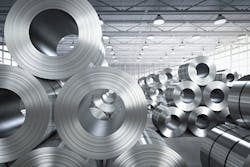NEMA Seeks to Minimize Collateral Damage from Tariffs in Statement to U.S. Trade Rep
The National Electrical Manufacturers Association (NEMA), Rosslyn, VA, told the Office of U.S. Trade Representative (USTR) that its member companies would be materially affected by additional 25% tariffs proposed by the USTR. The proposed tariffs would be an additional burden on top of the existing tariffs on more than 100 electrical and medical imaging products and inputs imported from China, NEMA said.
On June 20, USTR issued a list of 284 products from China that could face 25% tariffs in order to compel a change in Beijing’s intellectual property and industrial policies. Of those products, NEMA said at least 30 are of direct interest to its members. The NEMA website includes a more complete list as well as the full text of its statement.
In its statement, NEMA urged the administration to narrow the scope of the proposed tariff list so it does not do disproportionate harm to NEMA members’ U.S. production, including through the exclusion from the tariff list of inputs for which non-Chinese substitutes are not readily available, inputs that come from wholly-owned U.S. facilities within China and inputs from China that have a high percentage of U.S.-made content.
NEMA pointed as an example to several member companies that manufacture wireless lighting controls in the U.S. and rely exclusively on suppliers of very specific electronic components that are only available from suppliers in China and that are included in the proposed target list. “These specific components are small and inexpensive, but they are not widely available commodities that are easily replaced. They are necessary to meet high quality standards and achieve customer satisfaction,” NEMA said.
“If the 25% tariffs are implemented as proposed on these additional products and inputs, they will represent a tax increase on U.S. manufacturers and their industrial, commercial, and residential customers valued at about $500 million,” NEMA Director for Trade and Commercial Affairs Craig Updyke said in testimony to USTR.
NEMA took the opportunity to clarify its position on trade. “NEMA members have remained competitive in the open global economy of the 21st century in part by investing in extensive international supply chains based on comparative advantages,” said NEMA President and CEO Kevin Cosgriff. “Broader market access has fostered innovation, productivity, and growth opportunities for manufacturers, enabling them to service a larger, more diverse customer base and tap the highest quality inputs. These developments have benefitted consumers in the United States and around the world.”
“However, the benefits of openness to international trade are diminished to the extent that trading partners violate internationally agreed trade rules and norms,” Cosgriff added. “So NEMA supports USTR actions to defend markets from unfair practices. We would suggest that steps taken should minimize collateral damage associated with higher tariffs and be narrowly targeted and time-limited so as to produce negotiated outcomes that restore and, whenever possible, advance openness and fairness. If the purpose of these tariffs is to get the other party to the negotiating table, our industry for one would like to know when those negotiations are to begin.”
